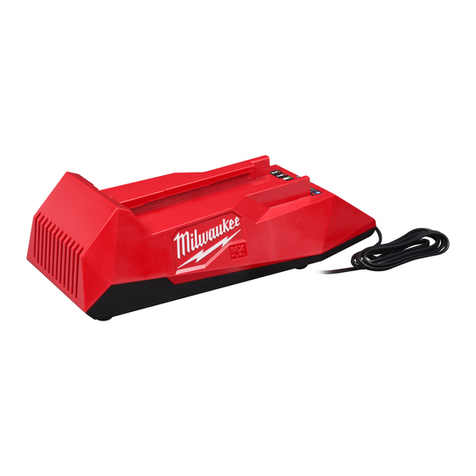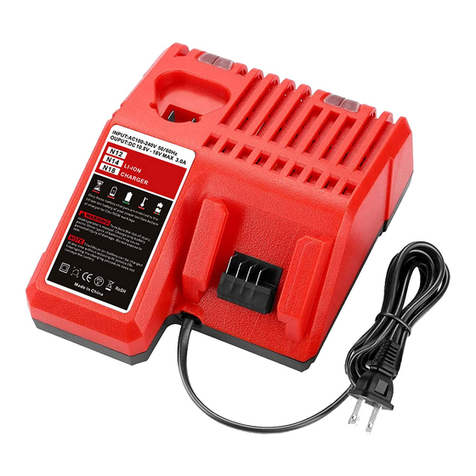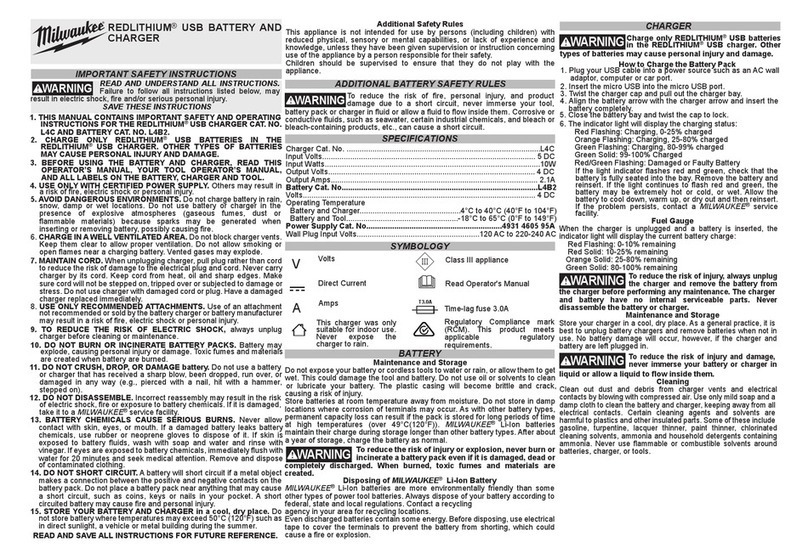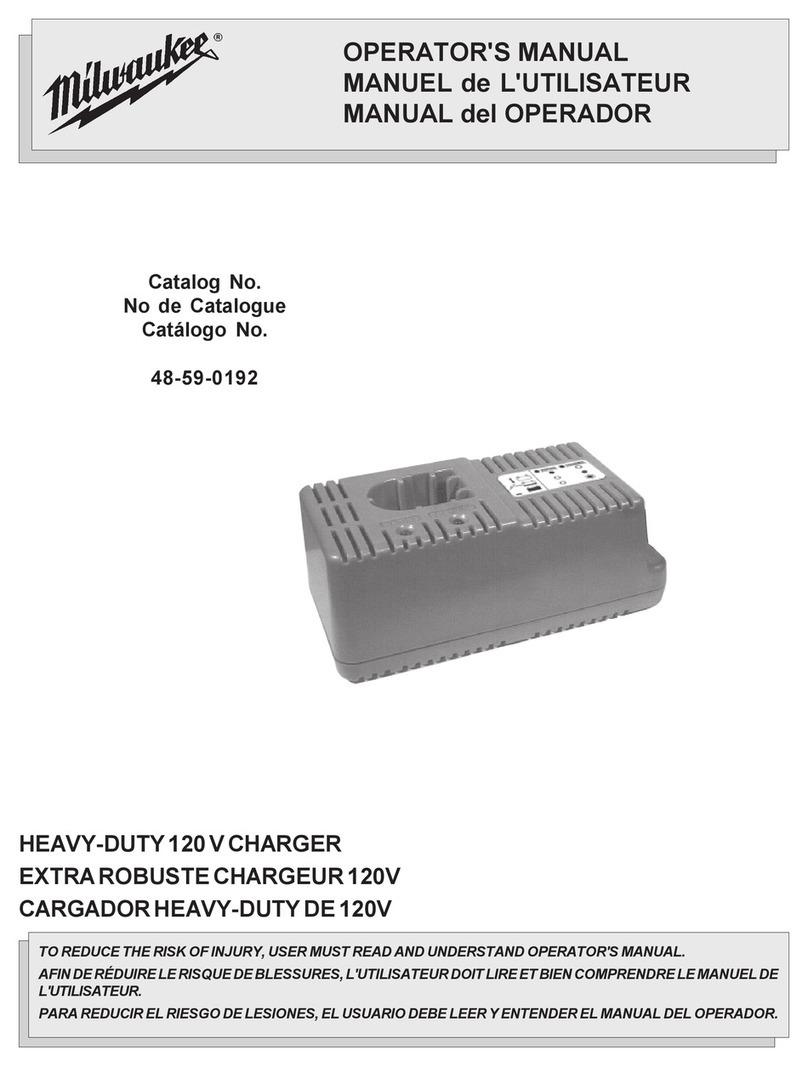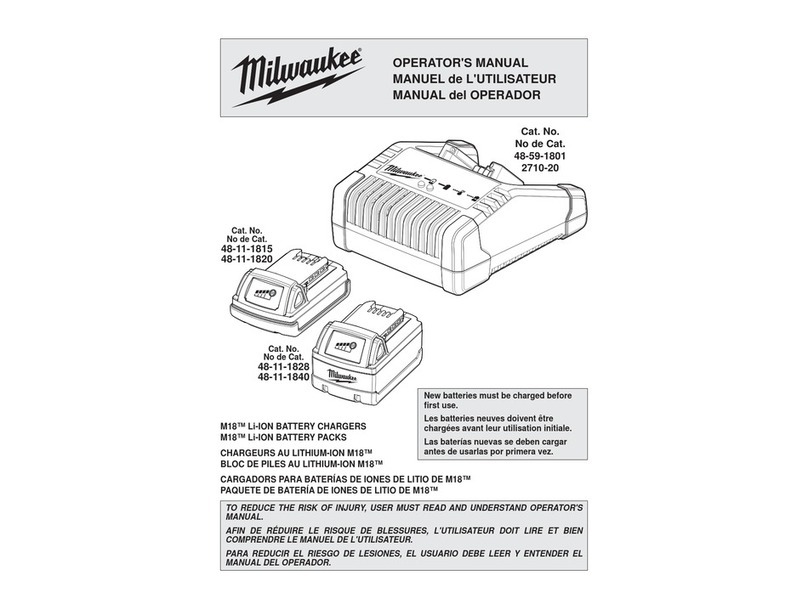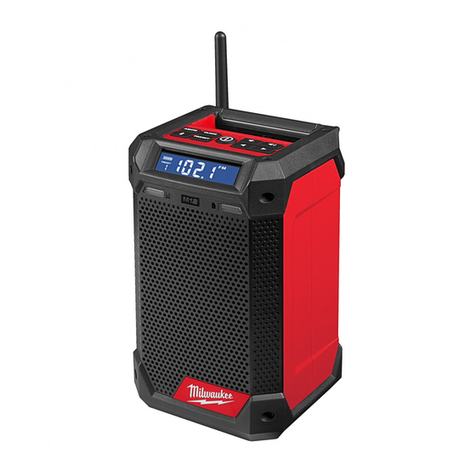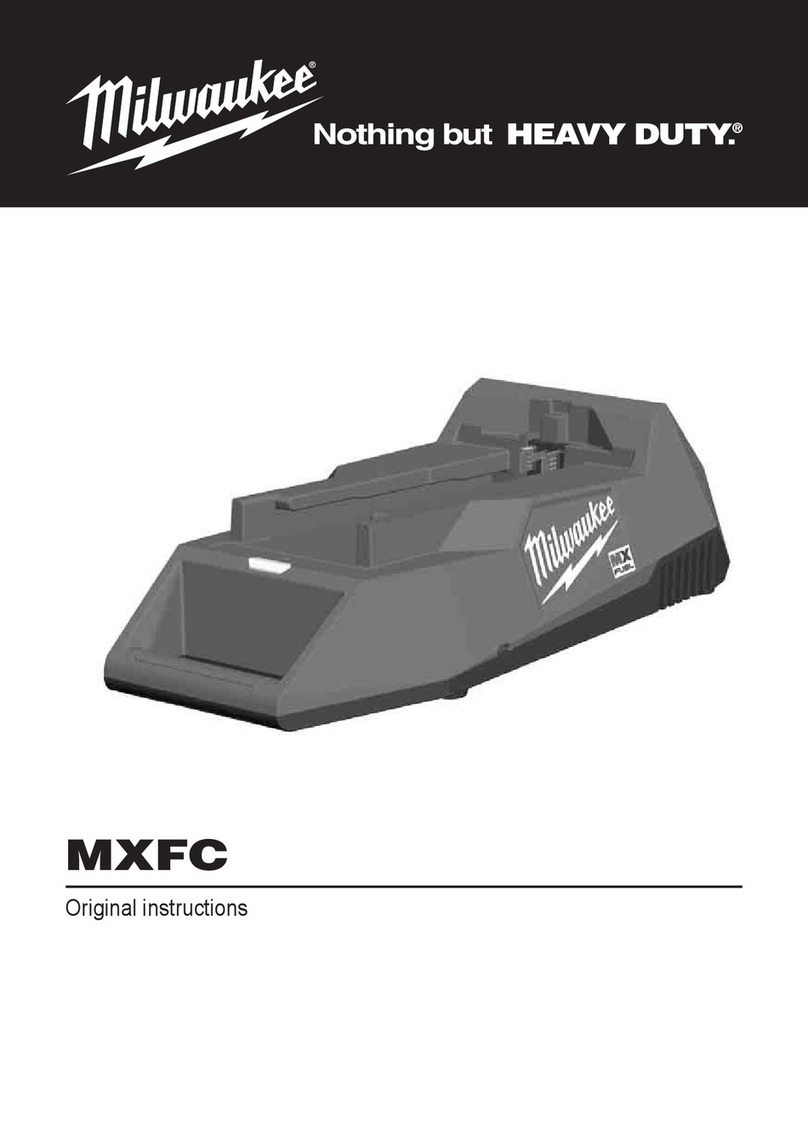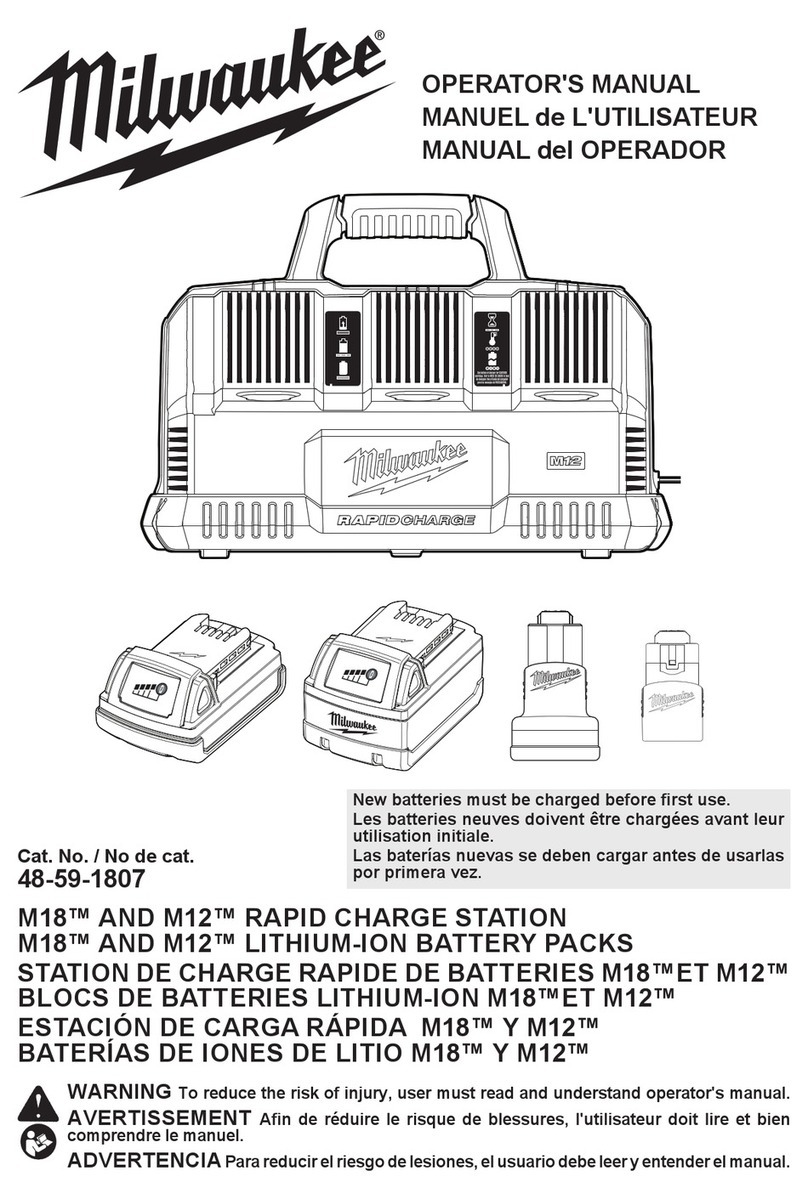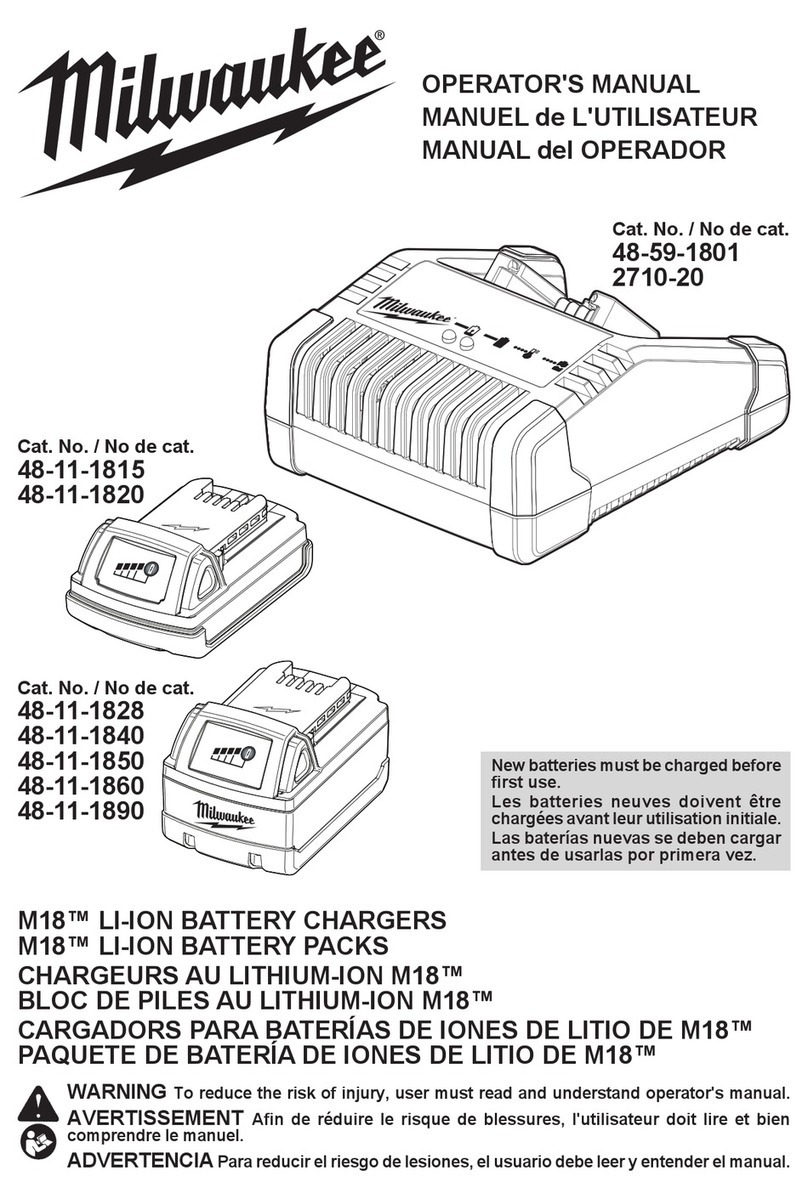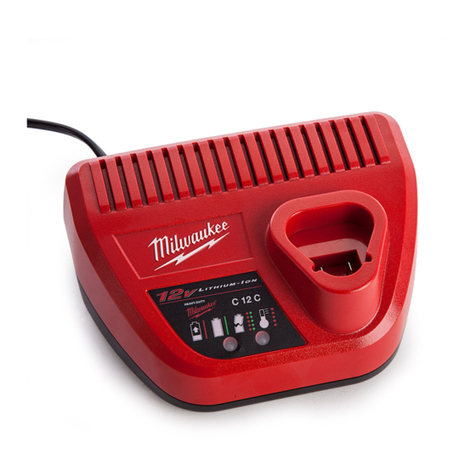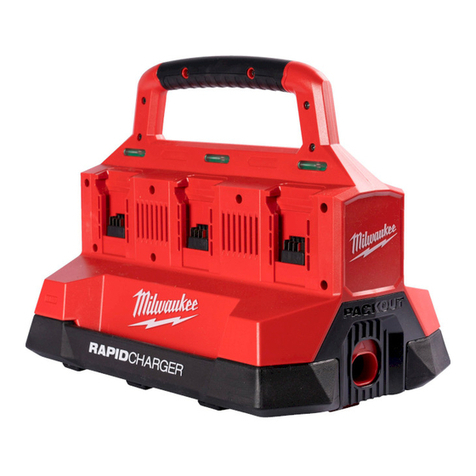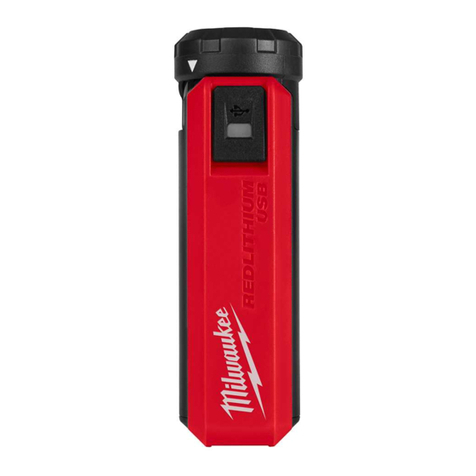
Page 10
Para r ducir l ri sgo d una l sión,
d scon ct si mpr la h rrami nta an-
t s d darl cualqui r mant nimi nto.
Nunca d sarm la h rrami nta ni trat d
hac r modificacion s n l sist ma
léctrico d la misma. Acuda si mpr a
un C ntro d S rvicio MILWAUKEE para
TODAS las r paracion s.
¡ADVERTENCIA!
MANTENIMIENTO
Adopte un progra a regular de anteni iento y antenga sus baterías y
cargador en buenas condiciones. Despues de 6 eses a un año,
dependiendo del uso dado, envíe su herra ienta, batería y cargador, al
Centro de Servicio MILWAUKEE as cercano para que le hagan:
Lubricación
Inspección y ca bio de carbones
Inspección ecánica y li pieza (engranes, flechas,
baleros, carcaza, etc.)
Inspección eléctrica (batería, cargador, otor)
Probarla para asegurar una adecuada operación
ecánicay eléctrica
Mant nimi nto d la h rrami nta
Si la herra ienta no arranca u opera a toda su potencia con una batería
co pleta ente cargada, regrésela, con el cargador y la batería, a un centro
de servicio MILWAUKEE para que sea reparada (vea Reparaciones).
Mant nimi nto d las bat rías
Las baterías MILWAUKEE de níquel-cad io y de níquel-hidruro etálico,
funcionarán por uchos años y/o cientos de ciclos si se utilizan y se
antienen de acuerdo con estas instrucciones.
Una batería que está guardada, sin usarse, por seis eses , se descargará.
Las baterías se descargan a razón de 1% por día. Con el objeto de axi izar
la vida de la batería, cárguela batería cada seis eses aun si no la usa. No
deje la herra ienta desatendida con el interruptor en la posición ON
(encendido) y cubierto con una cinta, ya que esto podría descargar la
batería hasta tal punto que nunca ás se podrá recargar. Si el bloque de
pilas secas no se vuelve a cargar, retírelo del cargador por un período de
24 horas. Esto per itirá que se reponga de una fuerte descarga. Al cabo
de ese plazo, vuelva a insertar el bloque de pilas secas en el cargador para
cargarlo a toda su capacidad. Use una bateria MILWAUKEE hasta que ya
no trabaje con la potencia y el torque necesario para la aplicación requerida.
Al acene su batería en un sitio seco y fresco. No lo al cene donde las
te peraturas puedan exceder 50ºC (120º F), co o puede ser dentro de
un vehículo o un edificio etálico durante el verano. Las altas te peraturas
sobrecalentarán la batería, reduciendo la vida de la is a. Si se le guarda
por varios eses, la batería perderá su carga en for a gradual. Se llevará
entre uno y tres ciclos de carga y descarga con un uso nor al, para que
se restablezca la capacidad total de la batería. Durante la vida de la batería,
el tie po operativo de la is a se va reduciendo. Si este tie po operativo
se vuelve de asiado corto luego de una carga adecuada, significa que la
vida útil de la batería ha sido concluída y deberá ca biarse por una nueva.
Cada herra ienta MILWAUKEE ha sido inucionsa ente inspeccionada
y probada antes de ser e pacada y despachada. En caso de que se
presente algún proble a, favor de regresar la herra ienta co pleta (flete
pagado) a nuestra oficina principal o a cualquiera de nuestros centros de
servicio autorizados. Si se encontrase que el proble a es causado por falla
de orÍgen en alguna de sus partes o co ponentes, o por fallas en la ano
de obra al ser ensa blada, se reparará la herra ienta sin cargo y se le
regresará (con flete pagado) a su propietario.
Esta garantia pierde su validez cuando: (1) Las reparaciones o intentos por
reparar han sido realizados por personas ajenas a la Fábrica, sucursal de
Servicio o Taller Autorizado de Servicio MILWAUKEE; (2) Requiere ser
reparado por causas de uso y desgaste nor al; (3) Se ha abusado de la
herra ienta o esta ha sufrido algún accidente; (4) Hay un al uso evidente
tal co o el causado al sobrecargar la herra ienta as alla de su capacidad
encionada; (5) La herra ienta ha seguido siendo usada luego de
presentar fallas parciales; o (6) Se ha usado la herra ienta con un
accesorio inadecuado. No se reconoce ninguna otra garantia ni verbal ni
escrita.
GARANTIA
Limpi za
Li pie el polvo y suciedad de las ventilas del cargador y la herra ienta.
Mantenga los angos y e puñaduras li pios, secos y libres de aceite o
grasa. Use solo jabón neutro y un trapo hú edo para li piar la herra ienta,
batería y el cargador, ya que algunos substancias y solventes li piadores
son dañinos a los plásticos y partes aislantes. Algunos de estos incluyen:
gasolina, turpentina,thíner, lacas, thíner para pinturas, solventes para
li pieza con cloro, a oníaco y detergentes caseros que tengan a onia.
Nunca usa solventes infla ables o co bustibles cerca de una herra ienta.
Cómo d s char las bat rías d níqu l-cadmio
Las baterías de níquel-cad io son reciclables. Es posible que bajo las leyes
estatales y locales sea ilegal descartar este tipo de baterías en los flujos
unicipales de desechos. Regrese las baterías al centro regional o centro
de servicio de MILWAUKEE ás cercano a usted o, deséchelas de acuerdo
con los regla entos federales, estatales y locales.
Cómo d s char las bat rías d níqu l-hidruro m tálico
Las baterías de níquel-hidruro etálico son reciclables y ta bién se pueden
descartar en los flujos unicipales de desechos. Para reciclarlas, regrese
las baterías al centro regional o centro de servicio de MILWAUKEE ás
cercano a usted. Sie pre deseche este tipo de baterías de acuerdo con
los regla entos federales, estatales y locales.
R paracion s
Si su herra ienta, batería o cargador están dañados, envíela al centro de
servicio ás cercano de los listados en la cubierta posterior de este anual
del operario.
Garantía d la bat ría
Las baterías para herra ientas están garantizadas por un año a partir de
la fecha de co pra.
Para r ducir l ri sgo d una l sión,
d scarga léctrica o daño a la
h rrami nta, bat ría o cargador, nunca
los sum rja n líquidos ni p rmita qu
stos fluyan d ntro d los mismos.
¡ADVERTENCIA!
Para r ducir l ri sgo d una xplosión,
no qu m nunca una bat ría, aun si stá
dañada, mu rta o compl tam nt
d scargada.
¡ADVERTENCIA!
